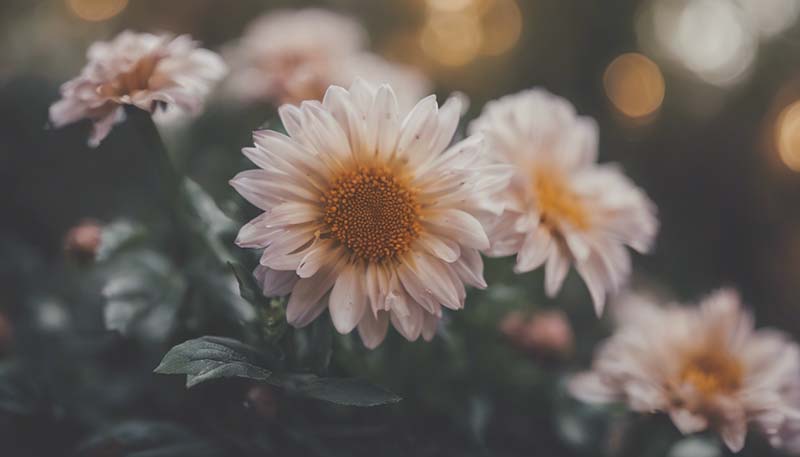Seasonal Flower Photography: A Beginner's Guide to DSLR
Photography and Inspiration | 2024-07-31
Introduction
Photography is an art form that captures moments in time, telling stories through the lens. One of the most beautiful subjects to photograph is nature, and within that, the vibrant and diverse world of flowers. Seasonal flower photography is a popular genre that allows photographers to explore the changing landscapes and flora throughout the year. This guide is designed for beginners who are looking to get started with DSLR (Digital Single-Lens Reflex) cameras and want to specialize in capturing the beauty of seasonal flowers.
Understanding Your DSLR Camera
Before you can start taking stunning photos of flowers, it's essential to understand the basics of your DSLR camera. Here are some key components and settings you should familiarize yourself with:
1. Aperture
The aperture is the opening in your camera lens that controls the amount of light entering the camera. It's measured in f-stops (e.g., f/2.8, f/5.6, f/8). A lower f-stop number means a wider aperture, allowing more light in and creating a shallow depth of field, which is ideal for isolating your subject and creating a blurred background effect.
Advertisement
2. Shutter Speed
Shutter speed is the length of time your camera's shutter is open, determining how much light reaches the sensor. It's measured in seconds or fractions of a second. Faster shutter speeds (e.g., 1/500, 1/1000) freeze motion, while slower speeds (e.g., 1/30, 1/15) can create a sense of motion or blur.
3. ISO
ISO measures your camera's sensitivity to light. A lower ISO (e.g., 100, 200) results in less sensitivity and less noise (graininess) in your images, while a higher ISO (e.g., 800, 1600) increases sensitivity, allowing you to shoot in lower light conditions but can introduce more noise.
4. White Balance
White balance affects the overall color temperature of your images. It's essential for capturing accurate and natural colors in different lighting conditions. You can set your white balance manually or choose from preset options like sunny, cloudy, or shade.
5. Autofocus
DSLR cameras often have multiple autofocus points. You can select a single point or use multiple points to focus on different areas of your subject. For flower photography, it's often best to focus on the most detailed part of the flower, such as the center or a specific petal.
Tips for Capturing Stunning Seasonal Flower Photos
1. Choose the Right Season
Each season offers unique opportunities for flower photography. Spring brings vibrant colors and blooming flowers, summer offers lush greenery and bright blooms, fall can provide a backdrop of warm colors with changing leaves, and winter may reveal interesting textures and shapes in dormant plants or frost-covered flora.
2. Use Natural Light
Natural light is your best friend in flower photography. The golden hour (the hour after sunrise or before sunset) provides soft, warm light that can enhance the colors and details of your subject. Overcast days can also offer diffused light that reduces harsh shadows and brings out the subtle tones in flowers.
3. Experiment with Angles and Perspectives
Don't be afraid to get down on your knees or even lie on the ground to capture a unique perspective. Try shooting from above, eye level, or below to see how different angles can change the composition and impact of your images.
4. Use a Tripod
A tripod can help you achieve sharper images, especially when working with slower shutter speeds or in low light conditions. It also allows you to take your time to compose and focus on your subject without worrying about camera shake.

5. Pay Attention to the Background
A cluttered or distracting background can detract from your beautiful flower subject. Look for a simple or complementary background that enhances your image without competing for attention. You can also use a wide aperture setting to blur the background and draw focus to your flower.
6. Get Close and Personal
Macro lenses are fantastic for capturing the intricate details of flowers, but even with a standard lens, you can get close to your subject and fill the frame with the flower. This can create a powerful and intimate portrait of your subject.
7. Edit Your Photos
Post-processing can enhance your flower photos by adjusting colors, contrast, and sharpness. Learn to use photo editing software like Adobe Lightroom or Photoshop to make your images pop and stand out.
Conclusion
Seasonal flower photography is a rewarding and enjoyable way to explore the natural world with your DSLR camera. By understanding your camera's settings and experimenting with different techniques, you can capture the beauty and diversity of flowers throughout the year. Remember to be patient, as Mother Nature can be unpredictable, and always respect the environment when photographing in natural settings.
Comments